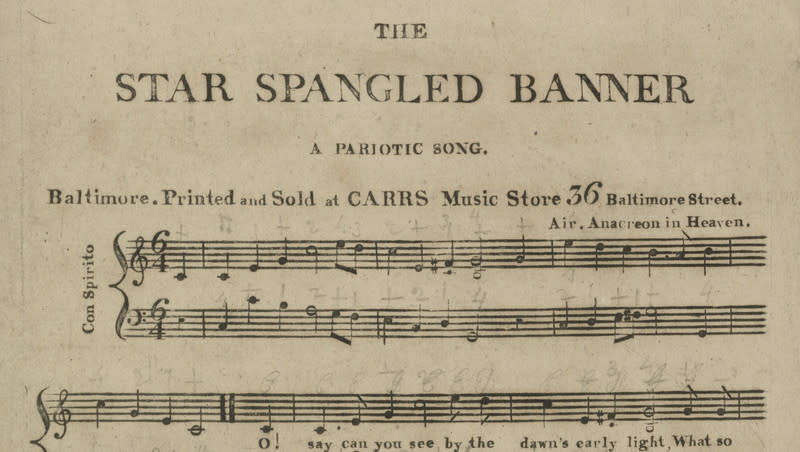The history of ‘The Star-Spangled Banner’

- Oops!Something went wrong.Please try again later.
Francis Scott Key watched as the Battle of Baltimore raged on. The barrage of shells convinced him it would be a British victory as the battle stretched on from Sept. 13, 1814, to the next day, per Smithsonian Magazine.
“It seemed as though mother earth had opened and was vomiting shot and shell in a sheet of fire and brimstone,” Key would later write, per Smithsonian Magazine. But then, the dawn broke and light signaled another day.
Amid “the dawn’s early light” on Sept. 14, an American flag waved in the air and Key, seeing the stars and stripes, was inspired to write a poem, according to Smithsonian Magazine.
Related
The poem was titled “Defence of Fort M’Henry,” but it was later called “The Star-Spangled Banner.”
Key had written the first verse of the poem on the back of a letter after he had seen the American flag wave, and he later completed three additional verses, per the Smithsonian Institute. After writing these verses, a local printer made a copy of the song and it was published by two Baltimore newspapers. Other newspapers in the East picked it up and published it as well.
The tune of the song was a popular pub song “To Anacreon in Heaven” — the same tune that the first custom campaign song was set to (“Adam and Liberty” written by Thomas Paine for John Adams). When the song was printed with sheet music, its name changed to “The Star-Spangled Banner,” per Britannica.
The song became a popular tune across the nation. Abolitionists penned a verse to add onto the track to discuss the importance of ending slavery in the U.S., per the National Park Service. People in the temperance movement amended the lyrics of the song to argue for the end of drinking alcohol.
By 1889, the U.S. Navy started singing it when they raised and lowered the American flag. President Woodrow Wilson declared it the national anthem of all armed forces in 1916. It would still take more than a decade for it to become the official national anthem, per the park service.
“On March 3, 1931, President Herbert Hoover signed into law House Resolution 14, making ‘The Star-Spangled Banner’ the national anthem,’” the park service reported.
There were other songs in the running, like “America the Beautiful,” “My Country ’Tis of Thee,” “Battle Hymn of the Republic” and “Yankee Doodle Dandy.” At varying points in history, these songs were rallying cries for Americans and were widely sung.
Since “The Star-Spangled Banner” has been made the national anthem, it has been sung by a variety of different musicians. Here are five performances of the national anthem.
Related

